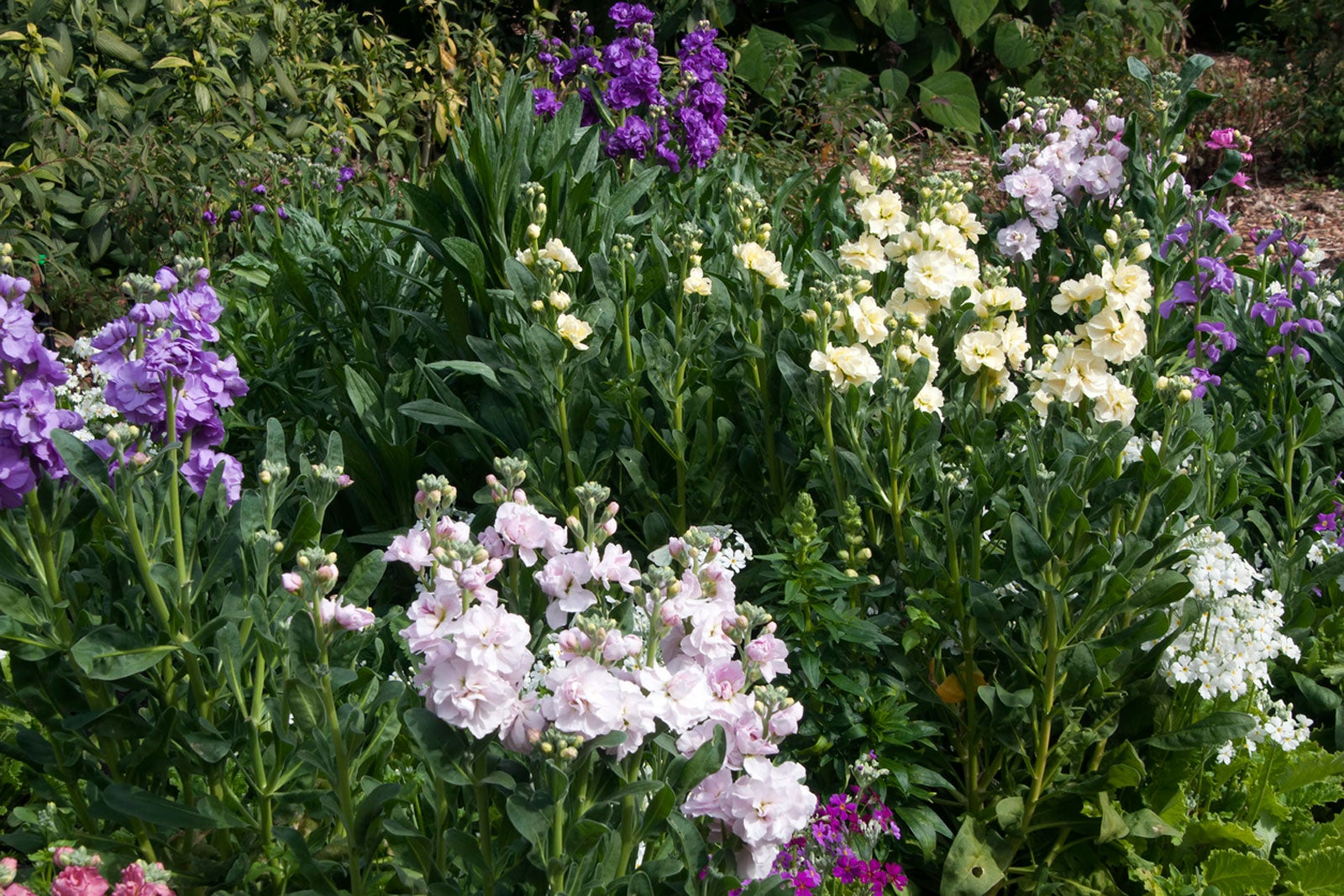Night Scented Stock Care: How To Grow Evening Stock Plants


Night scented stock plants are a sensory delight in the landscape. Also known as evening stock plants, night scented stock is an old-fashioned annual that reaches its peak fragrance at twilight. The flowers have a blowy elegance in faded pastel hues and make excellent cut flowers. Best of all, evening stock plants are easy to grow and thrive in a wide range of soil situations provided they are in full sun.
What is Night Scented Stock?
Annual flowers add a different dimension and style than perennials. Perennials are aggressively consistent while annuals need to be sown every year to grace the garden with their visage and scent. Night scented stock plant is one such gentle annual denizen. The flowers are a sweet wonder in faded tones that seem like they stepped out of another century. However, it is the aroma of these blooms that is the real attraction. You just have to stay outdoors into the evening hours to enjoy it. Matthiola longipetala is the botanical name for the plant. The common name is far more descriptive, as it refers to the flowers’ intensely sweet nighttime scent. Plants grow 18 to 24 inches (46 to 61 cm.) tall on sturdy stems with silvery green, lance-shaped leaves. Flowers may be single or double and in hues of rose, pale pink, lavender, magenta, maroon or white. The smell of the flowers has been described primarily as resembling vanilla with some rose and spice mixed in. In United States Department of Agriculture zone 8 and above, the plant should be grown as a winter annual. The plant enjoys weather that ranges from 60 to 80 degrees Fahrenheit (16 to 27 C.).
Growing Night Scented Stock
Evening stock should be planted in early spring, February to May depending upon your zone. You may also start growing night scented stock indoors two months before the date of your last frost. Space transplants 6 inches (15 cm.) apart and keep them moderately moist. One tip for growing night scented stock is to stagger the seeds so the bloom period will be extended. Prepare a bed in a sunny location by tilling at least 8 inches (20 cm.) down into soil and ensure that the area is well draining. If it isn't, incorporate sand or some compost to enhance percolation. Either is fine, as night scented stock plants thrive in either highly fertile or nutrient depressed soil.
Night Scented Stock Care
This is an easy plant to maintain and performs beautifully without much intervention. Keep the soil evenly moist but never soggy. The biggest pests for evening stock are aphids, which can be fought with bursts of water and horticultural soap or neem oil. Remove the spent blooms to promote more flowers. If you wish to harvest seed for the next season, allow flowers to persist until they form seed pods. Let pods dry on the plant, then remove them and crack open to release the seeds. There are many lovely varieties of night scented stock from which to choose. 'Cinderella' is a series of beautiful double petal blooms, while the 24-inch (61 cm.) 'Early Bird' is a group of tall early blooming stock. Each of these requires the same simple night scented stock care but offer slightly different flowers and sizes. Use them in containers, borders and even hanging baskets to perfume your landscape and decorate it with gentle color.
Gardening tips, videos, info and more delivered right to your inbox!
Sign up for the Gardening Know How newsletter today and receive a free copy of our e-book "How to Grow Delicious Tomatoes".

Bonnie Grant is a professional landscaper with a Certification in Urban Gardening. She has been gardening and writing for 15 years. A former professional chef, she has a passion for edible landscaping.
-
 Moody Blooms For Spring: 8 Types Of Black Flowers To Add Drama To Spring Displays
Moody Blooms For Spring: 8 Types Of Black Flowers To Add Drama To Spring DisplaysFrom midnight burgundies to inky violets, several types of black flowers can enrich and embolden a spring display. Try these brooding bloomers for a moody garden
By Tonya Barnett
-
 Can Snake Plants Live Outside? Everything You Need To Know For Snake Plants Al Fresco
Can Snake Plants Live Outside? Everything You Need To Know For Snake Plants Al FrescoSnake plants can live outside given the right conditions, but be careful that they don't take over! Learn the best way to use snake plants in your landscape.
By Mary Ellen Ellis
